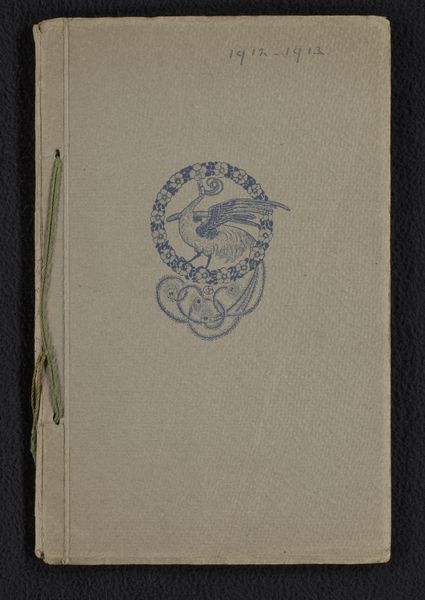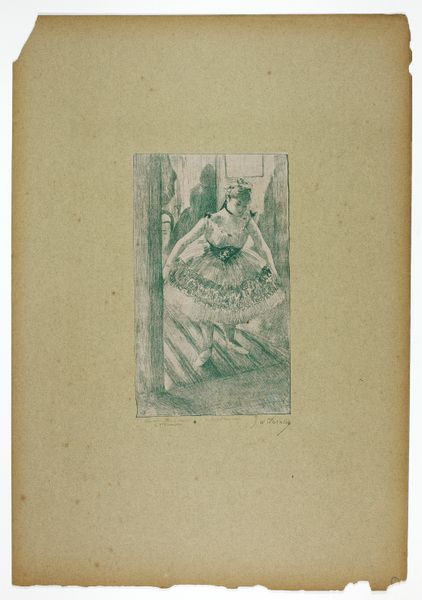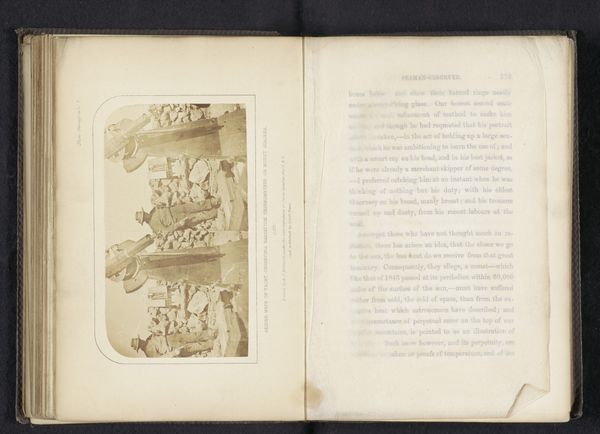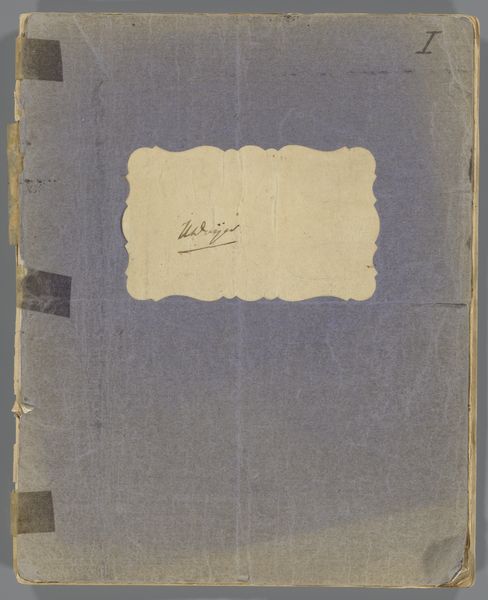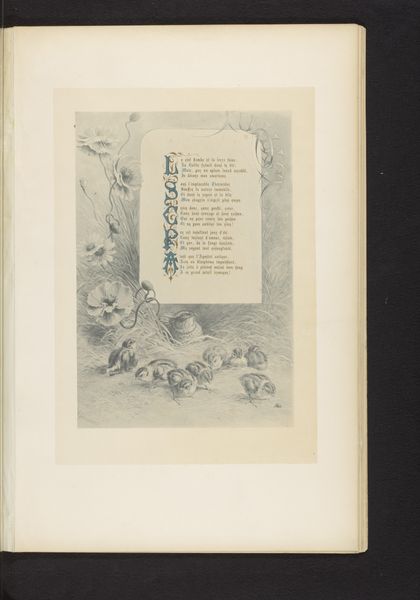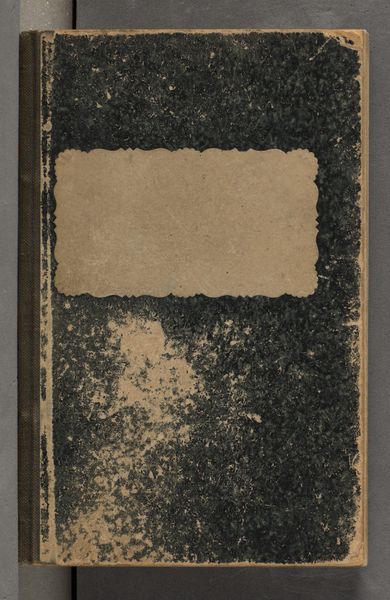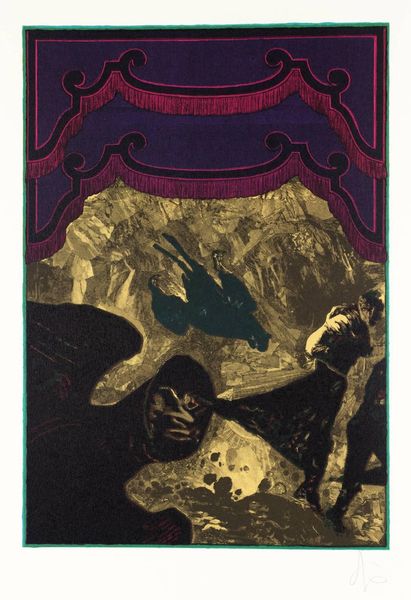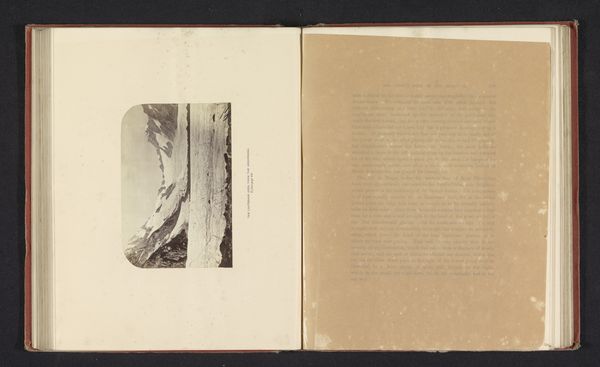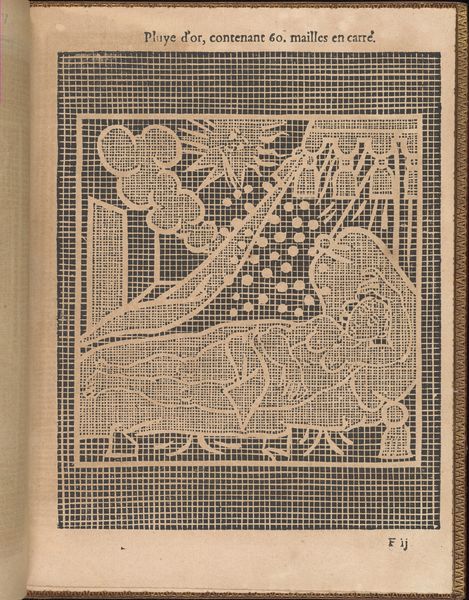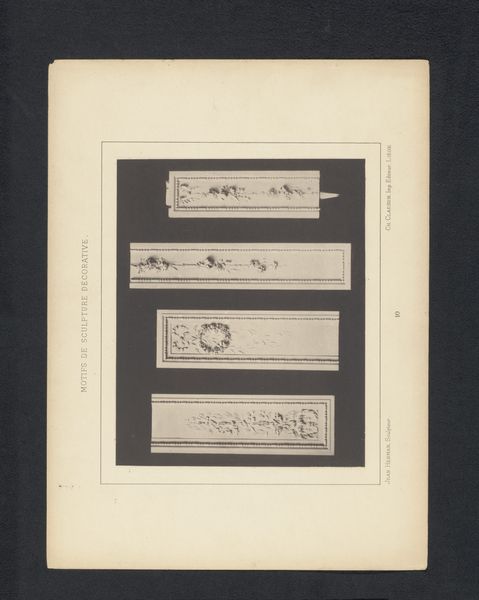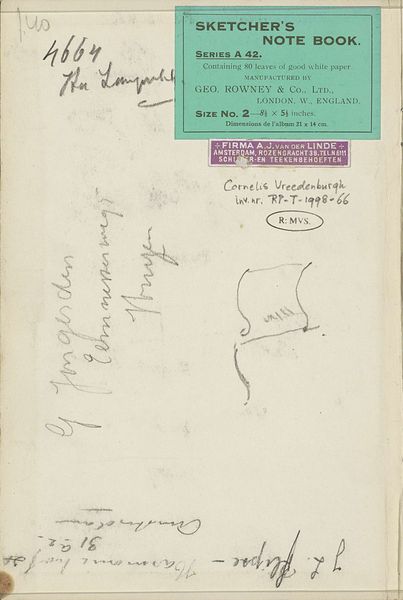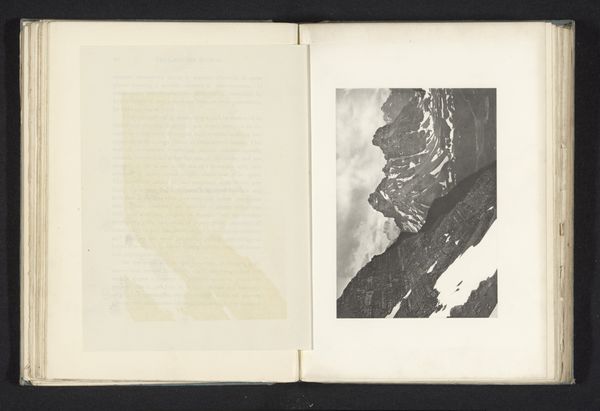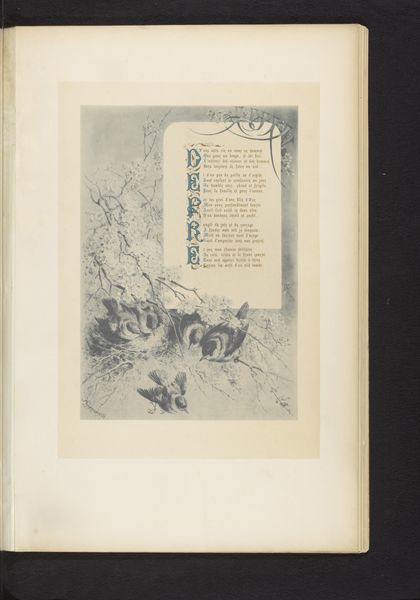
Popular Superstitions, from the Honest Library series (N115) issued by Duke Sons & Co. to promote Honest Long Cut Tobacco 1896
0:00
0:00
drawing, lithograph, print, poster
#
drawing
#
lithograph
# print
#
orientalism
#
genre-painting
#
poster
Dimensions: Sheet: 4 1/8 × 2 1/2 in. (10.4 × 6.3 cm)
Copyright: Public Domain
Editor: Here we have "Popular Superstitions" from 1896, part of the Honest Library series by W. Duke, Sons & Co. It's a lithograph print used as a tobacco advertisement. I find the imagery striking – the black cat on a tombstone is a strong image. How do you see this piece in terms of its production and context? Curator: The key is indeed the printmaking process itself and how that connects to its purpose. This lithograph wasn't intended as fine art; it's a mass-produced advertising premium. What can we infer from the use of cheap printing methods, readily available images of folklore like this? Editor: So, it's not just about the image, but also about how widely it could be distributed... affecting its potential impact. Like how an ear-worm catchy jingle could increase product awareness, the cat became another tool to connect tobacco to everyday experiences of superstition. Curator: Precisely. And consider the 'Honest Library' name. It creates an aura of respectability via free booklets; cheap gifts build brand association. Do you think the ‘Orientalism’ style mentioned has value for analysis? Editor: Hmm… I understand that Orientalism created imagined exotic worlds based on inaccurate accounts of Western scholars but in this case it feels that it points towards how a sense of “foreign” could generate trust and credibility on items such as tobacco and other consumables, adding value. It makes sense given the branding. It really opens my eyes to looking at even prints as more than just decorative items. Curator: Absolutely. Looking beyond the aesthetic helps us uncover these layered commercial and social meanings. I'm happy it all comes together in a better understanding for you. Editor: It certainly does. Thanks!
Comments
No comments
Be the first to comment and join the conversation on the ultimate creative platform.
